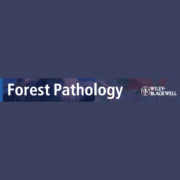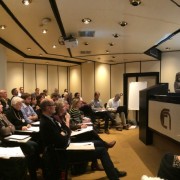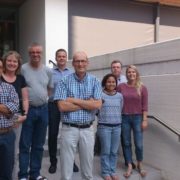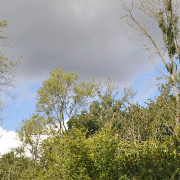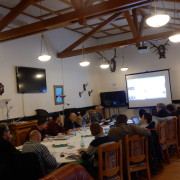Efficacy of fungicides on Hymenoscyphus fraxineus and their potential for control of ash dieback in forest nurseries
ORIGINAL ARTICLE
M. Hrabětová, K. Černý, D. Zahradník, L. Havrdová
Silva Tarouca Research Institute for Landscape and Ornamental Gardening, Publ. Res. Inst., Průhonice, Czech Republic
Abstract
Twenty-six commercial formulations of fungicides at six concentrations were evaluated in vitro for their efficacy on mycelial growth of Hymenoscyphus fraxineus (anamorph Chalara fraxinea). The results are presented as EC50, EC90 and minimal inhibitory concentration values; the comparisons with the recommended application concentrations showed that 10 of the 26 fungicides were highly effective in their ability to inhibit the mycelial growth of the pathogen. The eight most effective fungicides identified based on multiple comparisons analysis were azoxystrobin, bitertanol, captan (in two-component preparation with trifloxystrobin), difenoconazole, kresoxim-methyl, spiroxamine (in multicomponent preparation with tebuconazole and triadimenol), tebuconazole and trifloxystrobin. Azoxystrobin, difenoconazole, kresoxim-methyl, mancozeb, myclobutanil, pyrimethanil, tebuconazole and trifloxystrobin were selected to verify their effectiveness in in planta tests. During two field tests in nurseries, it was found out that tebuconazole (triazole), trifloxystrobin and kresoxim-methyl (strobilurins) and mancozeb (dithiocarbamate) were significantly effective against H. fraxineus. The best results were gained with tebuconazole, when mean percentage of diseased saplings was 16.3%, whereas in the control, it was 63.6%. The combination and alternation of fungicides from the triazole, strobilurine and dithiocarbamate chemical groups should be an effective tool for protecting ash saplings in forest nurseries. Moreover, exact timing of the treatment reflecting rainfall and development of first symptoms in the foliage will be also important.
Published on November, 30 2016 by FOREST PATHOLOGY

